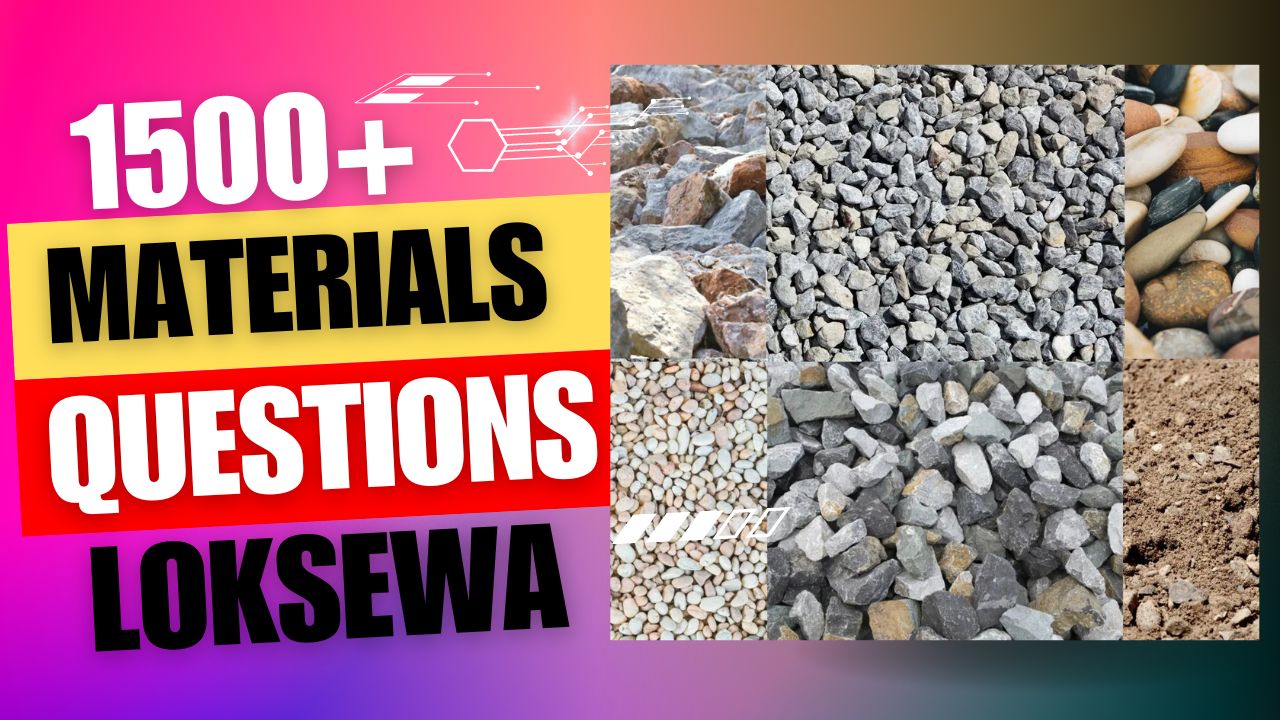11. What is the significance of the flakiness and elongation index in aggregates?
a) Determines the particle density
b) Determines the shape of the particles
c) Determines the aggregate hardness
d) Determines the aggregate porosity
View Answer
Correct answer: b) Determines the shape of the particles
Explanation: The flakiness and elongation index are used to evaluate the shape characteristics of aggregate particles, ensuring they meet specified requirements and do not compromise the performance of the concrete.
12. Which of the following aggregates is typically used for road construction?
a) Crushed granite
b) Rounded river gravel
c) Crushed limestone
d) Lightweight expanded clay
View Answer
Correct answer: a) Crushed granite
Explanation: Crushed granite is commonly used as a road construction aggregate due to its durability, high strength, and resistance to wear and weathering.
13. Which test is conducted to determine the aggregate impact value?
a) Los Angeles abrasion test
b) Aggregate crushing value test
c) Specific gravity test
d) Slake durability test
View Answer
Correct answer: b) Aggregate crushing value test
Explanation: The aggregate crushing value test measures the resistance of aggregates to crushing under a compressive load, providing an indication of their strength and suitability for various applications.
14. Which type of aggregate is most suitable for producing high-density concrete for radiation shielding?
a) Lightweight aggregate
b) Crushed limestone
c) Heavyweight aggregate
d) Natural sand
View Answer
Correct answer: c) Heavyweight aggregate
Explanation: Heavyweight aggregates, such as iron ore or steel aggregates, are used to produce high-density concrete for radiation shielding in nuclear power plants or medical facilities.
15. Which property of aggregates affects the workability of fresh concrete and the strength of hardened concrete?
a) Particle size
b) Moisture content
c) Absorption capacity
d) Surface texture
View Answer
Correct answer: d) Surface texture
Explanation: The surface texture of aggregates influences the workability of fresh concrete and the bond between the aggregate and cement paste, thereby impacting the strength of hardened concrete.
16. Which type of aggregate is typically used as a base material for road construction?
a) Fine sand
b) Recycled concrete
c) Clay soil
d) Crushed stone
View Answer
Correct answer: d) Crushed stone
Explanation: Crushed stone, often in the form of dense graded aggregate (DGA), is commonly used as a base material in road construction due to its stability, load-bearing capacity, and drainage characteristics.
17. Which test is used to determine the particle size distribution of aggregates?
a) Specific gravity test
b) Los Angeles abrasion test
c) Slump test
d) Sieve analysis
View Answer
Correct answer: d) Sieve analysis
Explanation: Sieve analysis is a commonly used testto determine the particle size distribution of aggregates by passing them through a series of sieves with different mesh sizes and measuring the amount of material retained on each sieve.
18. Which type of aggregate is commonly used for making mortar?
a) Coarse sand
b) Fine gravel
c) Crushed limestone
d) Lightweight aggregate
View Answer
Correct answer: a) Coarse sand
Explanation: Coarse sand is commonly used as an aggregate in mortar, as it provides good workability and helps to fill voids between larger particles.
19. What is the primary function of aggregates in asphalt mixtures?
a) Provide color and texture
b) Increase thermal conductivity
c) Enhance rutting resistance
d) Improve bond strength
View Answer
Correct answer: c) Enhance rutting resistance
Explanation: Aggregates in asphalt mixtures improve the rutting resistance of the pavement by providing structural stability and interlocking, minimizing the deformation caused by repeated traffic loads.
20. Which type of aggregate is typically used in the production of precast concrete products?
a) Crushed stone
b) River sand
c) Lightweight aggregate
d) Gravel
View Answer
Correct answer: a) Crushed stone
Explanation: Crushed stone is commonly used as an aggregate in the production of precast concrete products due to its strength, durability, and ability to produce a smooth surface finish.





